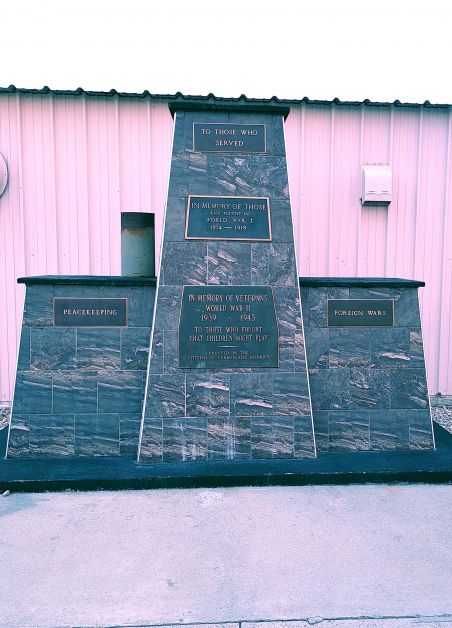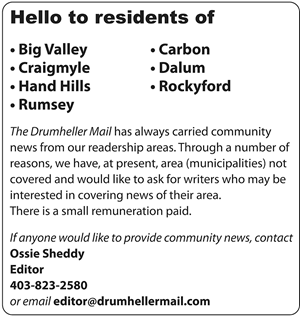
If you look closely next time you pick up your mail, you will notice two antique photographs behind the counter. These two survived the First World War and made a home in Drumheller.
The two are husband and wife, Fitzwilliam Hill and Annie Olive Hill. They are Mike Brown’s grandparents.
Brown tells the Mail how his grandfather Fitzwilliam was born in England but homesteaded near Hanna. He was one of eight children, and all seven brothers served in the military at some point in their lives. When the First World War broke out, he enlisted. It wasn’t as easy as going to the local office and signing up. He walked to Stettler to join up.
“My grandfather signed up for the Canadian military and went overseas to fight,” Brown tells the Mail.
He served as a stretcher-bearer and served in the horrific trenches of World War I. When soldiers were wounded, they had to wait for the stretcher-bearers and hope they would find them. It was a treacherous job.
“He served in the trenches and faced mustard gas they thought he was dead on a couple of occasions,” said Brown.
During his time in the military, tragedy struck at home as his first wife passed away.
Fitzwilliam was wounded while serving. He was shot through both feet.
While recovering in England, he met an English nurse in the hospital, and the two were married.
Eventually, they made their way back to Canada and then Drumheller.
“After the war, when they moved back he worked all over the place. He worked in every province in Canada, and then he settled in Drumheller,” said Brown.
Brown has fond memories of his grandparents, especially his grandmother’s cooking.
‘She was a good cook, those nurses didn’t just tend to the wounded, they did a bit everything,” he said.
He also remembers the scars on his grandfather’s feet and his stories. He has a photo of his grandfather at 70 walking on stilts.
Fitzwilliam and Annie Olive are both buried at the Drumheller cemetery.
Brown feels it is important to honour the memory of his grandfather and all that served for Canada. He recently discovered these photos and felt it was important to display them.

















